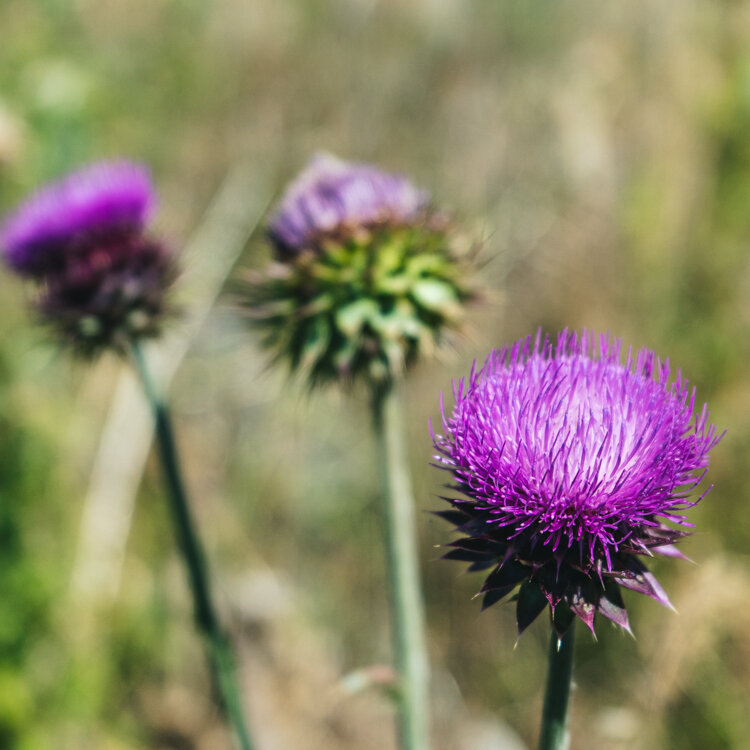Help Stop the Invasion of of Invasive and Noxious Weeds!
Many pollutants like trash, fertilizers, and oil wreak havoc on our water supply in the Truckee Meadows, but did you know that weeds also impact our water quality? That’s right - weeds. Weeds may not seem to be a very hot topic at the moment, however, they cause much more damage than you would think. Noxious weeds - as in weeds that have been identified by the state of Nevada to be harmful to agriculture, the general public, or the environment - can cause countless problems aside from damaging aesthetic value to communities. Other ways in which noxious weeds can impact our community include:
Increased Soil Erosion
Since invasive weeds are not adjusted to our soils and climate, their roots often cannot hold the soil and nutrients in place, therefore, causing soil erosion
Increased Soil Salinity
Soil salinity can be a result of shallow-rooted invasive weeds taking over deep-rooted native species such as trees, shrubs and pasture. When shallow rooted species take over, the water table will rise, thus bringing minerals and salts from the groundwater to the surface of the soil
Increased Flood Potential
Due to the fact that weeds are unable to hold nutrients and soil in place, the presence of invasive plants can affect waterways’ ability to hold water
Decreased Water Quality
Weeds can impact water quality in a number of ways: erosion leads to increased sediment in our waterways, increased sediment leads to higher temperatures and thus lower oxygen levels, and the potential use of herbicides on weeds near riverbanks can drain into waterways and can cause algae blooms
Decreased Forage and Crop Yield
Weeds aggressively compete for water, nutrients and space therefore making it nearly impossible for crops to grow. Also, due to soil salinity, there can be detrimental effects on plant growth and yield
Displaced Wildlife and Native Plants
Nutrients can be hard to come by, especially when you’re competing with an invasive weed. Weeds will out-compete other plants for nutrients, sunlight, and space, leaving native flora in the dust. While the native plants are suffering, so are the local animals. The native fauna had adapted to co-exist with certain plant species, and when those plants are out-competed by weeds, the animals have lost their source of food and shelter
Reduced Recreation Potential
The presence of weeds affects the aesthetic value of properties as well as the health of native species. Higher levels of sedimentation in our waterways, increased risk of erosion and flash floods as well as fewer sightings of native flora and fauna will lead to lack of opportunity for recreational activities
Increased Fire Danger
Once weeds have gone dry they become an extreme fire hazard. Invasive species such as Cheatgrass and Medusahead are quite common as well as flammable
In an attempt to stop weeds in their tracks and to pay for damages caused by weeds, the United States pays up to $137 billion every year.
What is a Noxious Weed?
Musk Thistle* - “Nodding Thistle”
Noxious weeds are plants that have been identified by the state of Nevada to be harmful to agriculture, the general public, or the environment. Early detection and prevention are key in helping to slow the spread of noxious weeds. Some of the most common noxious weeds in our area include:
Musk Thistle* - “Nodding Thistle”
2 - 6 ft. tall
Flower is rather large at about 3 in. wide.
Flowers are pinkish or purple (sometimes can be white, as well)
Be careful during removal, stems and leaves are spiny
Yellow Starthistle*
Can range from 1 to 6 ft. in height
Famous for their yellow flowers found at the tip of the stems with spines branching out just below the flower. Spines can grow from 0.5 - 1 in. long
Puncturevine* - “Goatheads”
Low growing, grow in a mat-like form
Have very small, yellow flowers (0.2 - 0.6 in. in diameter); flowers have 5 petals
Produce woody burs (a dry fruit with hooks or teeth) that often break into 5 sections. These are also known as “goatheads” - known for poking holes in tires and sticking to shoes. Foliage can be toxic to livestock.
Puncturevine* - “Goatheads”
Yellow Starthistle*
Perennial Pepperweed* - “Tall Whitetop”
Medusahead*
Perennial Pepperweed* - “Tall Whitetop”
Up to 6 ft. tall
Small, white flowers with 4 petals, arranged in clusters at the tip of the stems
Grows best in moist places, such as near waterways, floodplains, etc.
Medusahead*
Stems can be .5 - 2 ft. long
Seedhead is a spike, 0.5 - 2 in. long. Bristles are stiff and can be straight or twisted.
Bristles can be up to 3 in. long
*Source: http://agri.nv.gov/Plant/Noxious_Weeds/Noxious_Weed_List/
So, what can be done?
Luckily you have the option of making a difference year round by simply remembering to stay on designated trails when walking, running, biking, hiking etc., and inspecting your clothing, boots, gear, pets, and vehicles for any plants and seeds before leaving home and the trail.
You can also make a difference by volunteering with KTMB throughout the year. Click here to learn more about upcoming beautification and clean up events near you and how to get involved.
Resources and other information.
Visit agri.nv.gov/NoxiousWeeds/ to learn more about noxious weeds, access the Nevada Noxious Weed field guide, the Weeds Quick Reference Guide, and other resources.
Visit the University of Reno, Nevada Cooperative Extension Program to learn more about their Invasive Weed Training and other weed prevention and management information.
This program is supported by funding from the Nevada Division of Forestry, Dept. of Conservation and Natural Resources through a Landscape Scale Restoration Grant awarded by the US Forest Service.







